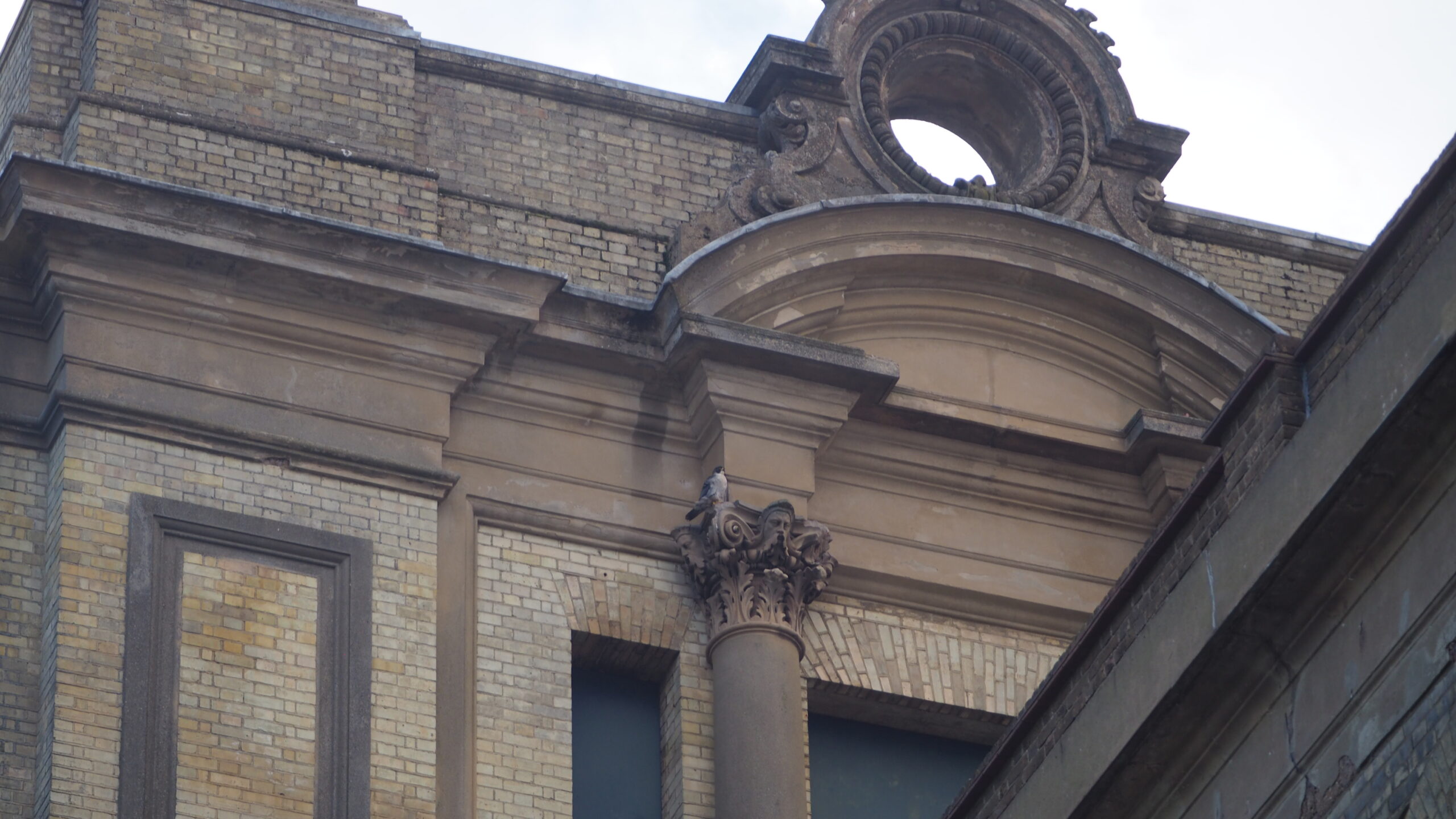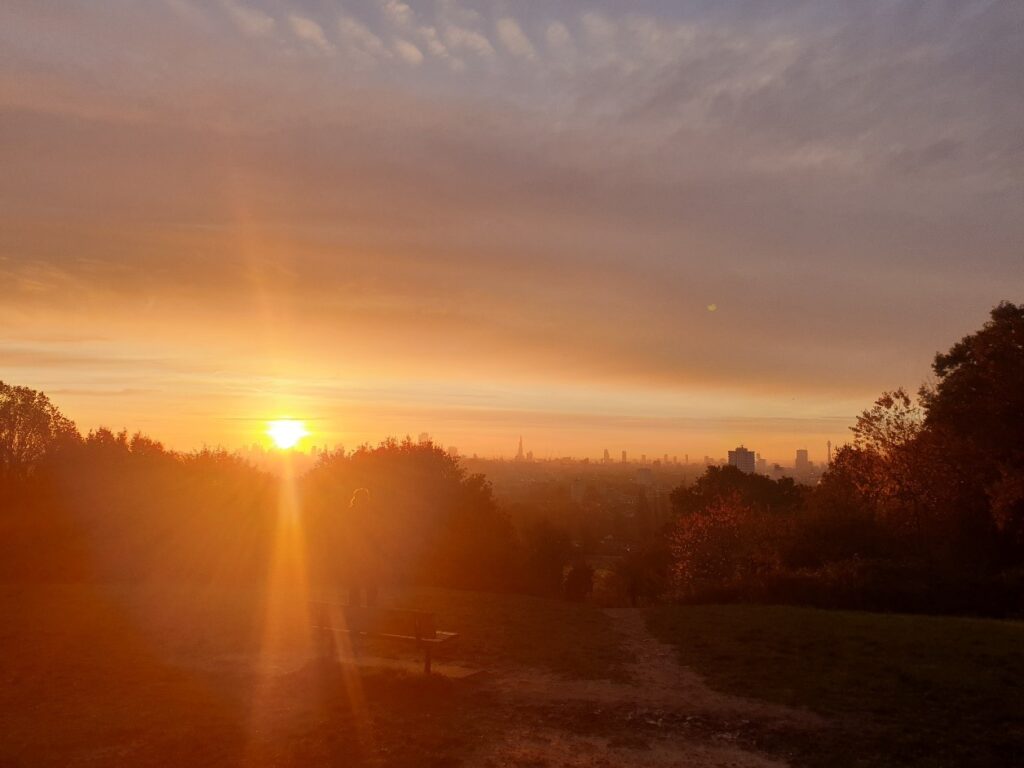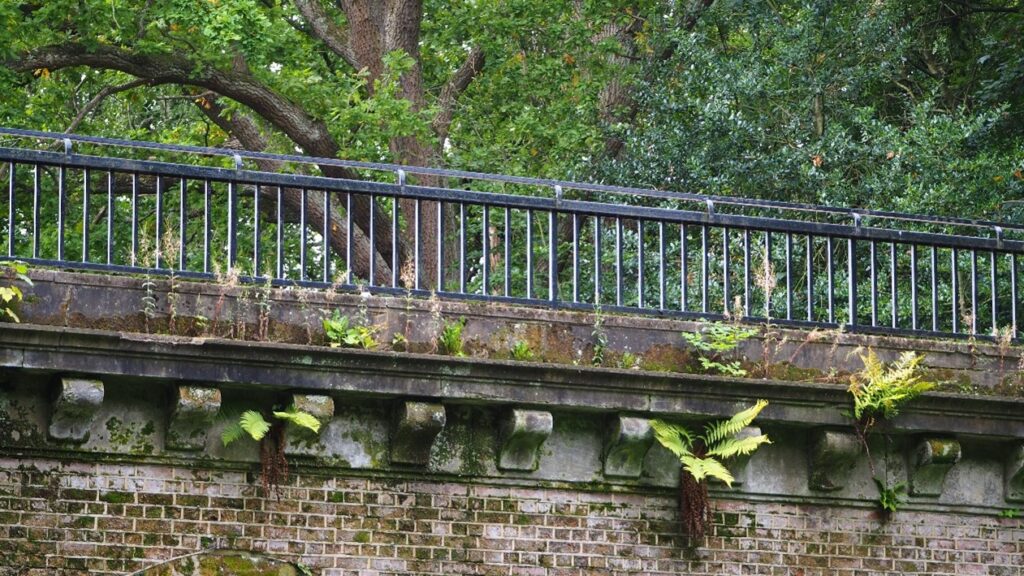
Keir Chauhan

Keir Chauhan
As if knowing of its rapturous admirers, the Short-Eared Owl circled the cricket playing field before disappearing out of sight. If I had been told a few years earlier about the possibility of seeing such a creature amongst the cityscape of London, I would not have believed it. Over the last three years, I have become more in tune with the natural world around me. This process occurred because of my growing adoption of birdwatching to unwind and manage my anxiety. The owl, like many birds I had seen in the park, was a culmination of my journey so far – the connections I had formed between my local urban spaces and the natural places within them.

Sunrise over London taken on Hampstead Heath. (Keir Chauhan)
Before I became interested in birds, I had to escape the conception that nature could not exist within a cityscape. I had to embrace the agency of my city, London, as a place of special importance to wildlife and people. I needed to learn how the built environment provided homes and havens for breeding and migratory birds. Most of all, I had to alter the way I saw the city’s green spaces. I had to realize that London’s individual environmental places — remnants of the ancient forest of Middlesex — when assembled, form an altogether wilder, healthier, and greener picture of London.
For Londoners like Navita Atreya, “green space allows (her) to reset and think about things differently” and “to breathe more slowly and deeply” so that she can escape from a “turbulent world”. Atreya’s experience is illustrative of the power of embracing green spaces for Londoners’ health.
The National Park City movement works to make greener, wilder, and healthier cities. London was the first National Park City to be formally recognized under the National Park City Charter. My first encounter with the London National Park City concept thrilled me because it encourages inclusive and equitable access to the natural environment for all Londoners. It allowed me to consider how some of my favorite places to walk might add up to something bigger than their constituent parts. They could become part of a city that embraces its green spaces and the importance of the human as part of the ecosystem.
The National Park City Movement joins together different community groups working on the environment. My own experience of being a London National Park City Ranger has been useful in informing my understanding of the strength of such a concept. By linking birdwatchers and herbalists with campaigners and artists, the London National Park City can embrace the diversity of London’s people and places.

Ferns growing on a bridge in Hampstead Heath. (Keir Chauhan)
The London National Park City project has discussed and worked on improving the safety of city parks for women as well as running the #DoLondonDifferently campaign to highlight all that can be done in the city linked to green spaces.
Ed Santry, Coordinator for the London National Park City says the “movement is encouraging and supporting initiatives that address” environmental justice issues. Santry highlighted the “disparity between green spaces and house prices” in London. The link between access to green spaces and higher house prices systematically excludes those who are most vulnerable from accessing natural spaces. By tackling the “disassociation” between people and green spaces, the London National Park City hopes to improve cultural cohesion throughout London, according to Santry. This includes tackling food insecurity through “working with food banks” to distribute locally grown food from allotments (community gardens) and working directly with communities to get the benefits “of green spaces for everyone.”
The vision for London and other proposed National Park cities including Chattanooga, Tennessee is for a new citywide focus on people’s environment and the benefits of equitable access for all. By working to expand those who are connected to place, Ed Santry hopes “the stronger the voices can become” for equitable and increased access to green spaces.
Environmental initiatives like London National Park City and the broader National Park City movement help to build the capacity for changes to the status quo. When discussing environmental injustice in cities it can be disheartening. Yet, by reimagining cities for people and natural places through the National Park City Movement, more positive connections can be created to build the capacity for deeper connections between human and non-human city-dwellers. For me, it might have started with a seemingly simple idea, but it resonated with me because it allows Londoners to see our homes and by extension our existence as a part of, not separate from, the natural world.